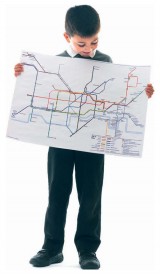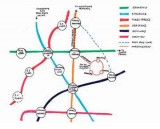Do away with bland and unnecessary objectives. Instead, try Paul Dix's ideas on how to negotiate new and meaningful goals with your class...
I am not a fan of the target setting culture. I know that I am not alone. The huge emphasis on target setting and the bureaucracy that accompanies it irritates teachers. It soaks up time that would be better spent working with children. As more paperwork lands on our desks – or in our inboxes - we are inundated by demands for targets by senior managers who are, in turn, forced to spend a great deal of time generating data. Targets for reports, behaviour, exams, literacy, numeracy, homework, coursework, attendance, healthy eating, breathing and being nice! It is a farcical bureaucratic paper chase that frustrates teachers who want to get on with teaching. At worst it is a bland and demotivating process that limits children’s expectations and fuels the data trolls who have an uncontrollable fetish for statistics, graphs and spreadsheets.
The emphasis is wrong. Productive target setting is about the conversation and not the calculation. It emerges through debate about and an ethos of shared responsibility for learning. Top down targets that are set for other people are not embarked on with enthusiasm or pursued with determination. Just think of the last missive you received from above or the constant initiatives that are flown in by government. The targets that matter are ones that we have had a hand in creating: rationally, logically and emotionally.
Perhaps it is time to start questioning the received wisdom surrounding target setting? We need to devise a process that is owned by the students; negotiate meaningful and useful targets; and limit the number of targets that an individual can reasonably be expected to hold. Target setting should be focused on understanding the next step in learning, as well as the dreams and aspirations of children.
If target setting alone raised achievement our lives would be so much easier. We would be able to set a target, watch as the child achieves it and then deliver another one. The truth is that when target setting raises achievement it does not do so in isolation. We are all motivated to strive for targets that have an emotional connection. So it goes for children. Learning times tables is logical, rational but not emotional. Mix in the pride of the parent, the pleasure of the teacher or the certificate that can be shown to gran and the target takes on a greater significance.
At age seven it is hard enough to remember what you did that morning let alone recall targets set for you last week/month. As well as monitoring the amount of targets that each child is expected to hold, it is important to create aid memoires with them so that they can literally ‘hold onto’ their targets. By linking the targets to agreed images the goals for each individual remain hidden from others and meaningful to the child. Ask the children to create icons to represent each target and draw these onto a bookmark, laminate them to the desk or design them into a screen saver. For the visually and digitally literate child the image is easier to read than the word.
Good learning conversations gently hold up the mirror for the child to see. Excellent ones have learning that is mapped and targets that are written down.
 A tube map serves as a simple, quick and efficient way to chart learning. And it’s easy for you and the children to make your own – all you will need are coloured pens, some white pieces of card and small, round, coloured stickers (see fig.1).
A tube map serves as a simple, quick and efficient way to chart learning. And it’s easy for you and the children to make your own – all you will need are coloured pens, some white pieces of card and small, round, coloured stickers (see fig.1).
The first thing to do is agree on a key. Which elements of learning are we tracking? How manylines will we need? What are we going to show in the map? Where will lines cross over? What route choices can we highlight?
As the conversation develops, you can help children to map out different ideas and thoughts, highlight clear choices in routes, illustrate changes in direction, and mark next steps in learning. Your questions will assume the child has the answer: ‘On a scale of 1-10 what do you think…?’, ‘Tell me what you can do to…?’, ‘What do you think made you throw Charlie’s bag out of the window?’.
Paraphrase and echo back what the child has said, ‘So what you are saying is…’. Ask questions to increase motivation, “What is stopping you from doing this immediately?” and frame targets positively.
The map can show how long it might take to reach each station as well as illuminating targets that might lie at the end of the line. It is a working document that is managed by the child, added to, reflected on and used as part of the classroom routines. (Keep a folder with a copy of each map so that children can go to them every day.)
Create a map that charts your own work and education as a model for your children. They may be interested in your fast routes and success as a learner, as well as the scenic routes, long delays and ends of the line!
The conversation, the map and the emotional driver don’t fit easily into the statisticians’ boxes. They do so much more for raising engagement and achievement than that.
 How to improve target setting conversations…
How to improve target setting conversations…
• Word targets using the child’s language
• Look for emotional hooks to link to targets
• Reinforce what is going well and use this as a reason to raise expectations
• Bring in the view of others/evidence/data gently. ‘Why do you think Mrs Bell is so pleased with you?’
• ‘Hold up the mirror’ for the child with questions that do not lead or judge
• Link the agreed targets to a set of images and discuss where these are to be kept
• Agree any shorthand that you have used in the wording of the target ‘Accurate work means…’ ‘Safe means…’
• Make the child feel good about the conversation
• Assume children have the answer, and question to find it
• Summarise with the child through the tube map and by testing their recall of the discussion
Paul Dix’s new book The Essential Guide to Classroom Assessment will be launched in May. Teach Primary readers can get 20% off by pre-ordering with .(JavaScript must be enabled to view this email address) or 0207 000 1735
Use scaffolding to wean children off high levels of TA support
Ace-Kitchen-Manager
Pie Corbett’s bike poems
Topic
Top tips for differentiation
Ace-Maths
